Jakie baterie są używane w BESS?
Kiedy odkryjesz świat akumulatorowych systemów magazynowania energii (BESS), przychodzi mi na myśl zasadnicze pytanie: co właściwie jest w środku? Jaka jest podstawowa technologia akumulatorów, która tak skutecznie magazynuje energię z paneli słonecznych lub sieci?, gotowy do zasilania domu lub firmy, kiedy tego najbardziej potrzebujesz?
Zdecydowana większość nowoczesnych BESS zainstalowana jest dzisiaj, od projektów mieszkaniowych po ogromne projekty o skali użytkowej, używać Baterie litowo-jonowe. Swoiście, preferowaną i dominującą substancją chemiczną do stacjonarnego magazynowania energii jest LFP (Fosforan litowo-żelazowy lub LiFePO₄). Technologia ta została wybrana ze względu na doskonałe połączenie bezpieczeństwo, bardzo długa żywotność, i doskonałą stabilność, co czyni go złotym standardem niezawodności, długoterminowa wydajność.
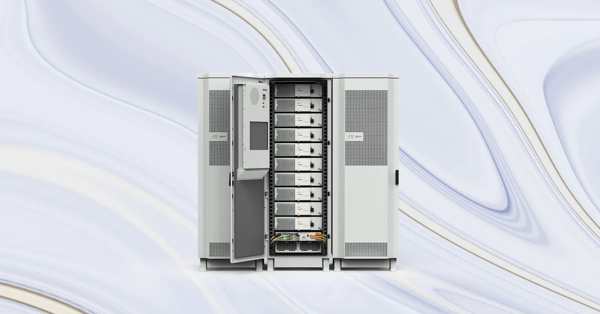
W Gycx Solar, nasze zaangażowanie w bezpieczeństwo i długoterminową wartość dla naszych klientów jest powodem, dla którego projektujemy wyłącznie nasze najlepsze baterie rozwiązania oparte na technologii LFP. To sprawdzone, profesjonalny wybór. Przyjrzyjmy się bliżej tym potężnym systemom.
Jaka jest żywotność baterii Bess?
BESS jest znaczący, długoterminowa inwestycja w infrastrukturę energetyczną Twojej nieruchomości. Więc, jest krytyczne pytanie: jak długo będzie działać element baterii, serce systemu, właściwie ostatni?
LFP (Fosforan żelaza litu) akumulator w nowoczesnym BESS został zaprojektowany z myślą o wytrzymałości, z przewidywaną żywotnością eksploatacyjną 10 Do 20 lata. Pod względem użytkowania, Baterie te są oceniane na imponujące 3,000 do końca 6,000 Cykle pełnego ładowania. Aby zapewnić klientom pewność co do długowieczności, renomowani producenci zazwyczaj obejmują swoje produkty BESS kompleksową 10-letnią gwarancją.
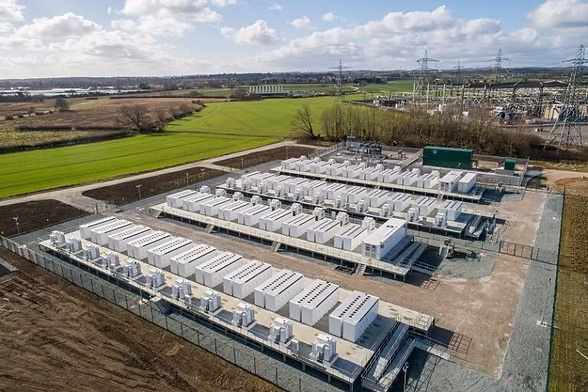
Nurkuj głębiej: Zasługi na długotrwałą baterię
Imponująca żywotność nowoczesnego akumulatora BESS nie jest dziełem przypadku; to wynik doskonałej chemii i inteligentnego projektu systemu:
- Chemia LFP: LFP jest z natury bardziej stabilny i wytrzymały niż inne chemikalia litowo-jonowe. Wytrzymuje stres związany z codzienną jazdą na rowerze (ładowanie z baterii słonecznej w ciągu dnia, rozładowywanie w nocy) przez wiele lat bez znaczącej degradacji. Bateria oceniana dla 6,000 Cykle teoretycznie mogą trwać 16 lata z jednym cyklem dziennie.
- Inteligentne BMS: Zintegrowany system zarządzania baterią (BMS) pełni funkcję opiekuna, stale chroniąc ogniwa akumulatora przed naprężeniami, zapobiegając przeładowaniu, nadmierne rozładowanie, i zapewnienie równowagi wszystkich komórek.
- Zarządzanie termicznie: BESS to system inżynieryjny z wbudowanym systemem zarządzania ciepłem. Ma to kluczowe znaczenie w gorącym i wilgotnym klimacie Singapuru. Utrzymując ogniwa akumulatora w optymalnym zakresie temperatur, system zapobiega przyspieszonemu starzeniu się, które może powodować ciepło, bezpośrednio przyczynia się do dłuższego życia.
- Gwarancja: 10-letnia gwarancja jest standardem branżowym dla wysokiej jakości produktów BESS do zastosowań mieszkaniowych. Zazwyczaj gwarantuje, że bateria zachowa określoną ilość pierwotnej pojemności (NP., 70%) do końca kadencji, zapewniając jasny punkt odniesienia dla jego długoterminowych wyników.
Jakie są trzy główne typy BESS?
Czy BESS dla pojedynczego domu jest taki sam, jak ten używany do obsługi sieci energetycznej całego miasta? Zupełnie nie. Technologia BESS jest niezwykle skalowalna, i zazwyczaj dzieli się go na trzy główne typy w zależności od zastosowania i rozmiaru.
Trzy główne typy BESS to:
- Mieszkaniowy BESS: Systemy małogabarytowe przeznaczone do domów indywidualnych.
- Handlowy & Przemysłowy (C&I) BESS: Systemy średniej skali dla przedsiębiorstw, fabryki, i inne nieruchomości komercyjne.
- BESS w skali użytkowej: Masywny, systemy na poziomie sieci będące własnością przedsiębiorstw energetycznych i przez nie obsługiwane.
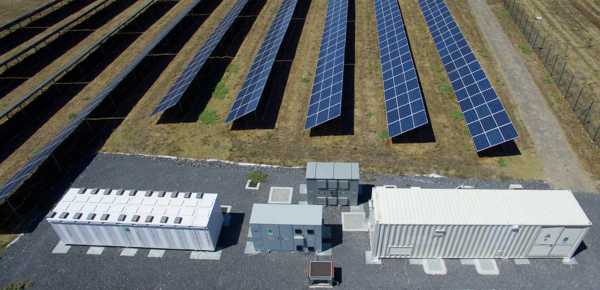
Nurkuj głębiej: Z Twojego domu do sieci
Przyjrzyjmy się celowi każdego typu:
- Mieszkaniowy BESS:
- Rozmiar: Typowo 5 kWh do 30 kWh.
- Zamiar: Głównym celem jest maksymalizacja własnego zużycia energii słonecznej (magazynowanie energii słonecznej w ciągu dnia do wykorzystania w nocy, co doskonale nadaje się do zarządzania wysokimi taryfami za energię elektryczną w Singapurze), zapewniają zasilanie rezerwowe w przypadku przerw w działaniu sieci, i zwiększyć niezależność energetyczną.
- Forma: Zwykle jest to elegancka jednostka naścienna lub kompaktowa, system regałów z możliwością układania w stosy.
- Handlowy & Przemysłowy (C&I) BESS:
- Rozmiar: Z 30 kWh do kilku megawatogodzin (MWh).
- Zamiar: Stosowany głównie do „golenia szczytów”." w celu zmniejszenia kosztownych opłat za żądanie, maksymalizując wykorzystanie energii słonecznej na miejscu, i zapewnianie zasilania rezerwowego dla krytycznych operacji.
- Forma: Często większe szafki wewnętrzne lub obudowy zewnętrzne.
- BESS w skali użytkowej:
- Rozmiar: Bardzo duży, od kilkudziesięciu do tysięcy MWh.
- Zamiar: Aby ustabilizować całą sieć energetyczną. Magazynują ogromne ilości energii z dużych farm słonecznych lub wiatrowych, świadczyć usługi sieciowe, takie jak regulacja częstotliwości, i zastąp zanieczyszczający plik „peaker" elektrownie.
- Forma: Zwykle składa się z dużych rzędów, jednostki transportowe wielkości kontenera.
Na Gycx Solar, specjalizujemy się w projektowaniu i montażu wysokowydajnych obiektów mieszkalnych i C&Rozwiązania I BESS dostosowane do unikalnych potrzeb energetycznych naszych klientów w Singapurze.
Czy BESS AC czy DC?
Kiedy już zagłębisz się w szczegóły techniczne BESS, usłyszysz terminy AC (Prąd przemienny) i DC (Prąd stały). Czy sam BESS jest jednym czy drugim? Odpowiedź jest prosta – działa jak inteligentny pomost między nimi.
BESS to zasadniczo: Urządzenie prądu stałego w jego rdzeniu, ponieważ baterie przechowują i uwalniają energię prądu stałego. Jednakże, wykorzystuje wyrafinowany falownik (System Konwersji Mocy, lub szt) aby połączyć się z naszymi domami i siecią, które używają Zasilanie sieciowe. Sposób podłączenia BESS i jego falownika do systemu paneli słonecznych określa, czy jest to system „sprzężony prądem zmiennym”." lub „sprzężony prądem stałym" system.
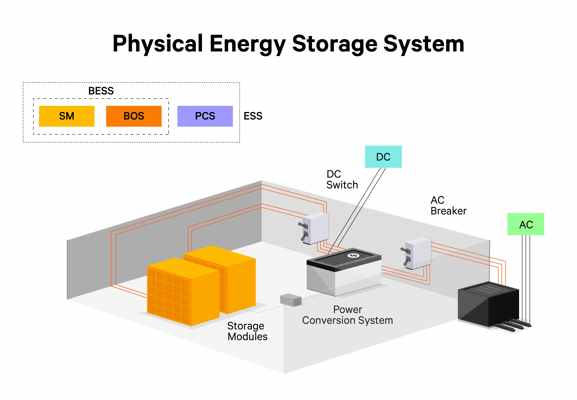
Nurkuj głębiej: Sprzężony z AC. Systemy sprzężone z DC
Oto krótki przegląd dwóch głównych architektur energii słonecznej + składowanie:
- DC-sprzężony: Panele słoneczne (które wytwarzają prąd stały) i baterie (które przechowują energię prądu stałego) są podłączone po tej samej stronie pojedynczego falownik hybrydowy. Dzięki temu prąd stały z paneli może bezpośrednio i bardzo efektywnie ładować akumulatory prądu stałego. Jest to często preferowana metoda w przypadku nowych, instalacje zintegrowane.
- Sprzężenie AC: Panele fotowoltaiczne posiadają własny inwerter solarny, a system baterii ma drugi, Oddzielić falownik baterii. Obydwa łączą się z panelem AC w domu. Naładować baterię od słonecznego, moc prądu przemiennego z falownika słonecznego jest przekształcana z powrotem na prąd stały dla akumulatora. Ta metoda doskonale nadaje się do modernizacji akumulatora w domu, który ma już system paneli słonecznych.
Gycx Solar Story: „Kiedy klient nas o to pyta, wyjaśniamy, że najlepszy wybór zależy od ich sytuacji. Dla nowej nieruchomości gruntowej w Singapurze łączącej energię słoneczną i magazynowanie, prawdopodobnie będziemy polecać wysoce wydajny system ze sprzężeniem prądu stałego. Dla klienta posiadającego 5-letnią instalację fotowoltaiczną, który teraz chce dodać rezerwę, BESS ze sprzężeniem prądu przemiennego jest idealnym rozwiązaniem."
Jak długo trwa BESS?
Rozmawialiśmy o żywotności elementu baterii, ale co z całą jednostką BESS? Jak długo można oczekiwać, że cały system będzie działał?
Kompletny BESS został zaprojektowany z myślą o długiej żywotności, ale różne komponenty mają różną żywotność. The moduły baterii, jak zauważyliśmy, zazwyczaj ostatni 10 Do 20 lata. Drugi ważny element elektroniczny, the falownik (lub szt), ogólnie ma średnią długość życia 10 Do 15 lata. Dlatego, możesz spodziewać się bardzo długiego okresu użytkowania swojego systemu, z możliwością planowej wymiany falownika jednorazowo w ciągu całego okresu użytkowania akumulatora.
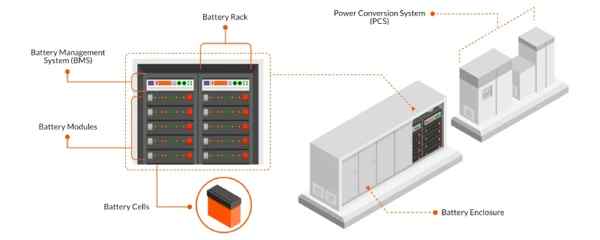
Nurkuj głębiej: Żywotność komponentów systemu
BESS to zbiór wysokiej jakości komponentów zaprojektowanych tak, aby ze sobą współpracowały:
- Moduły baterii: Baterie LFP są najtrwalszą częścią, dzięki solidnej chemii zaprojektowanej na tysiące cykli.
- Falownik (szt): To jest koń pociągowy systemu. Jako złożony element elektroniki mocy, który stale zarządza obciążeniami o dużej mocy i radzi sobie z ciepłem, jego komponenty (jak kondensatory i wentylatory) naturalnie wiek. A 10-15 letnia żywotność to typowe oczekiwanie w przypadku wysokiej jakości falownika hybrydowego renomowanej marki. Wiele z nich jest objętych 10-letnią gwarancją na akumulator.
- Inne komponenty: Obudowa, okablowanie, Odłącza bezpieczeństwo, i inny sprzęt („Równowaga systemu”) wszystkie zostały zaprojektowane tak, aby wytrzymać cały okres użytkowania systemu, pod warunkiem, że nie są uszkodzone.
- Planowanie długoterminowe: Oznacza to, że w okresie 20 lat, należy zaplanować początkową inwestycję i jedną potencjalną wymianę falownika na około 10-15 znak roku. Jest to normalna część długoterminowej własności zaawansowanego systemu energetycznego.
W Gycx Solar, budujemy nasze systemy, korzystając wyłącznie z produktów wysokiej jakości Komponenty BESS1 od wiodących producentów z solidnymi gwarancjami, i zapewniamy naszym klientom przejrzystość w zakresie oczekiwanej żywotności każdej części. Dzięki temu masz pewność, że rozumiesz wartość długoterminowa2 i plan konserwacji Twojej inwestycji.
A najlepsze baterie system jest inteligentny, zintegrowane rozwiązanie, które jest kluczem do nowoczesnego zarządzania energią. Zasilany bezpiecznymi i trwałymi akumulatorami LFP, to coś trwałego, obiekt wymagający niewielkiej konserwacji, zapewniający bezpieczeństwo energetyczne i oszczędności finansowe. Poprzez zrozumienie jego komponentów i sposobu działania, Możesz dokonać pewności siebie w swojej przyszłości energetycznej.
Jeśli jesteś gotowy, aby dowiedzieć się, jak BESS można dostosować do Twojego domu lub firmy w Singapurze, Nasz zespół ekspertów w Gycx Solar jest tutaj, aby pomóc. Skontaktuj się z nami w celu konsultacji zawodowej już dziś!
